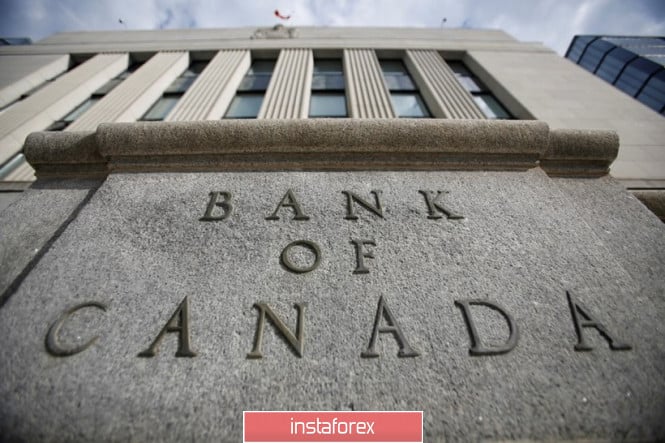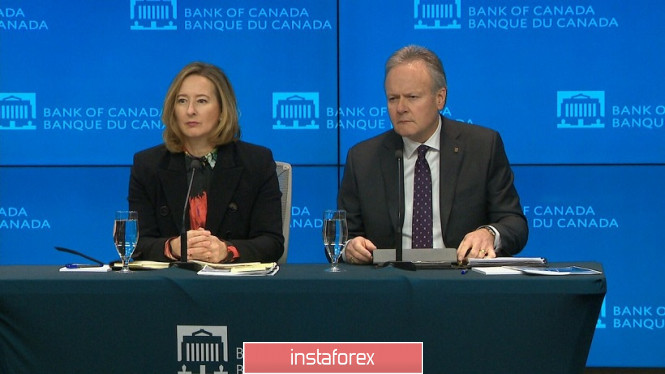The Canadian dollar was under significant pressure this week: first, traders were disappointed by data on inflation growth in Canada, and the Central Bank's rhetoric. The combination of such negative fundamental factors pushed the USD/CAD price to four-week highs, especially against the background of the general strengthening of the US currency. Nevertheless, the pair's buyers could not gain a foothold above the upper line of the Bollinger Bands indicator on D1 (that is, above the mark of 1.3150), thus saving before the next resistance level of 1.3200 (the lower limit of the Kumo cloud on the same timeframe). Now, the prospects for the loonie movement depend on the behavior of the US dollar - the "Canadian" is now too weak to be the first number in the pair.

Let me remind you that last Wednesday, the Canadian dollar came under pressure from both macroeconomic reports and the Bank of Canada. The consumer price index disappointed traders: the overall indicator in monthly terms came out at zero, while in annual terms, it remained at 2.2% with forecast growth of up to 2.3%. Core inflation showed a weaker result: every month, the index went into negative territory, reaching -0.4% (after the previous result -0.2%). In annual terms, the indicator also came out in the "red zone", slowing to 1.7%. Over the previous four months, it was at the same level (1.9%), and, according to experts, it should also have risen to this value in December. However, the actual numbers were lower than expected.
After the publication of these data, the Canadian dollar gradually became cheaper, however, the currency's decline was limited - traders were waiting for the announcement of the results of the January meeting of the Bank of Canada. Unfortunately, (for USD/CAD bears), the regulator took a fairly "dovish" position, despite the significant growth of the labor market and the previous growth of the oil market. Despite these factors, the Governor focused their attention on the negative aspects. However, the pressure on the Canadian increased even before the press conference of the head of the Canadian regulator. The Bank of Canada, as expected, kept the main interest rate at the same level (1.75%), but removed the wording from the text of the accompanying statement that the current rate level is "appropriate to the situation".
It is worth recalling that, according to the latest data, the level of Canada's GDP (every month) fell into negative territory (for the first time in the last eight months), reaching the level of -0.1%. In annual terms, the indicator slowed more than expected to 1.2%. The release structure indicates that 13 out of 20 economic sectors showed negative dynamics. In its accompanying statement, the Bank of Canada indicated that in the near term, the growth rate of the Canadian economy "will be weaker than the Central Bank predicted at previous meetings." The regulator also criticized the growth rate of consumer confidence and spending - according to the Bank of Canada, these indicators "were unexpectedly weak", as well as the volume of business investment.
The "dovish" tone of the final communique undermined the positions of the "loonie" bears - the pair went up. Stephen Poloz's further rhetoric only strengthened the northern movement. The head of the Central Bank made it clear that members of the regulator discussed the need to ease monetary policy, however, the current balance of risks allowed to keep the rate at the same level - "at this stage". He said that first of all, they discussed the weak growth rate of inflation and signs of financial instability. At the same time, Poloz made it quite clear that the balance of risks could shift in any direction - "due to the arrival of new data". He also pessimistically assessed the prospects for growth of inflation indicators due to the increase in the Canadian economy's stock of unused capacity.

Thus, the Bank of Canada took a wait-and-see position at its January meeting. But the tone of the accompanying statement and the rhetoric of the head of the Central Bank were extremely "dovish". By and large, Stephen Poloz warned that the regulator may reduce the interest rate at any next meeting. This probability will increase if key macroeconomic indicators (primarily inflation) continue to show signs of slowing down.
All this suggests that the USD/CAD pair retains the potential for its further growth. Although at the moment, currency market traders have switched to the topic of the spread of the deadly coronavirus - which means that the vector of the "loonie" price movement will soon be determined by the US currency. The US dollar is used by traders as a protective asset, so the growth of panic sentiment will push the pair up. So far, the situation is disappointing - the number of cases has increased to 830 people, and the number of deaths has reached 25. The growth of anti-risk sentiment in the market will open the way for the USD/CAD pair to the key resistance level of 1.3200.
The material has been provided by InstaForex Company - www.instaforex.com